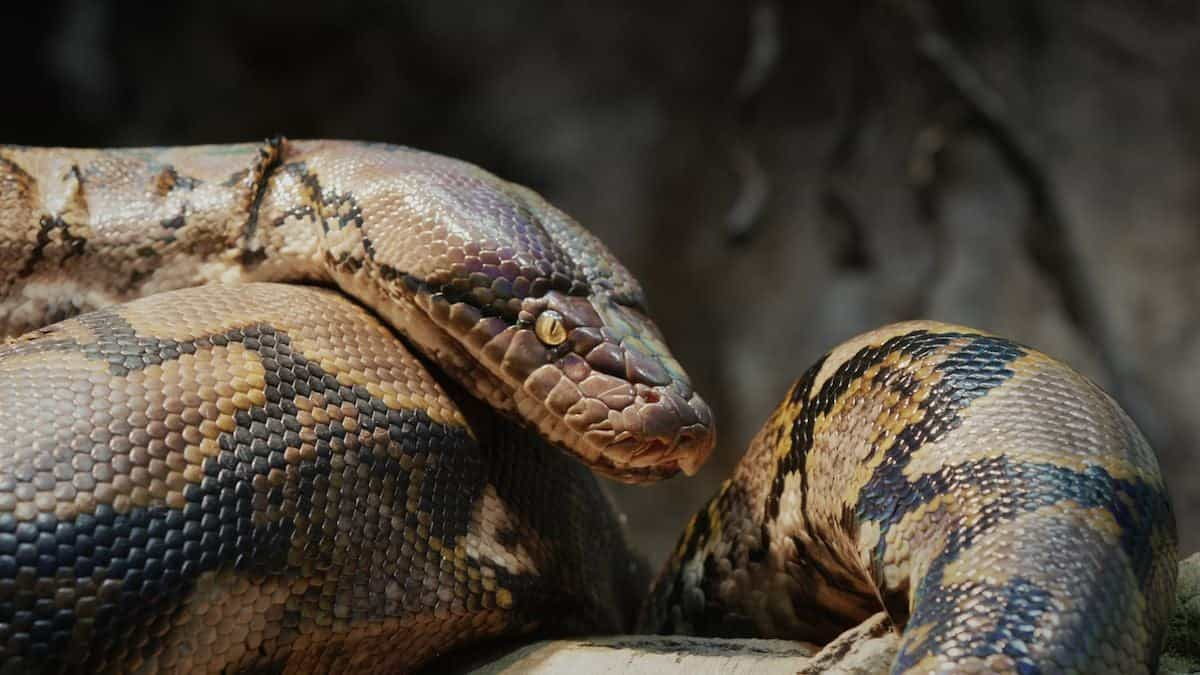Show table of content Hide table of content
In a shocking incident that has horrified villagers and wildlife experts alike, a 55-year-old Indonesian woman was fatally attacked by a massive python measuring seven meters in length. The tragic event occurred on Buton Island in the Sulawesi province, where such dangerous encounters between humans and wildlife are rare but not unprecedented.
Deadly encounter with a giant predator
Wa Siti, a local woman from a small village on Buton Island, disappeared last week after going to her garden to harvest vegetables. The routine task turned deadly when she encountered a massive python that attacked and consumed her. Her concerned family members initiated a search when she failed to return home that evening.
“Her son became worried and alerted other family members when his mother didn’t come back,” explained Police Inspector One Hardi, who handled the case. “They only found her basket initially, which prompted an immediate search throughout the garden area.”
Life This TikToker buys a used van and realizes it has a hidden surveillance device.
When the search party finally located Wa Siti, they discovered a horrifying scene – the enormous reptile had wrapped itself around her body and had begun consuming her head-first. This predatory behavior is typical of pythons, which immobilize their prey by constriction before swallowing them whole, similar to how Florida residents occasionally face dangerous alligator encounters in their homes.
Desperate to recover their loved one, villagers were forced to decapitate the python with a machete, but tragically, Wa Siti had already perished by the time they reached her. Local community members assisted the grieving family in transporting her remains back to the village for funeral arrangements.
Python attacks on humans: rare but devastating
Reticulated pythons, native to Southeast Asia, rarely target humans as prey. These massive constrictors typically hunt small to medium-sized mammals in their natural habitat. However, adult specimens can grow to exceptional sizes, with some reaching up to 10 meters in length, making them capable of overwhelming human victims in unusual circumstances.
Indonesia houses a significant population of these reticulated pythons, which are considered the longest snake species in the world. Their immense size and strength make them formidable predators in the island’s ecosystem, though they generally avoid human contact unless provoked or exceptionally hungry.
Life Say goodbye to flat and deep plates, here’s the new dinnerware trend for 2025.
Wildlife encounters in Indonesia aren’t limited to pythons – the archipelago nation boasts remarkable biodiversity across its thousands of islands. From massive marine creatures like those in cases where police officers rescued a 5,000-pound stranded fish to various exotic species that sometimes interact with humans unexpectedly.
Unusual animal-human interactions happen globally, as evidenced by incidents like when an adventurous sea lion wandered into a fish market seeking food. However, fatal attacks remain exceptionally rare.
The victim’s familiarity with local wildlife
According to family member Saimin, Wa Siti had lived near the garden area since childhood and was well aware of the presence of snakes in the vicinity. Despite this knowledge, she continued tending to her garden without apparent fear.
“I always worried about her working on the farm,” Saimin revealed. “I’ve personally spotted large snakes in that area before. But since she had lived there her entire life, she wasn’t afraid of them.”
This tragic incident highlights how even those accustomed to wildlife can fall victim to unexpected attacks. The python likely saw an opportunity when Wa Siti was alone and vulnerable, striking with the stealth these predators are known for.
Human-wildlife conflicts occur worldwide, though rarely with such fatal outcomes. In more controlled environments, even exotic animal enthusiasts face risks, as demonstrated when authorities arrested a man attempting to transport hundreds of tarantulas on an airplane.
Wildlife safety in rural Indonesia
The incident has renewed discussions about safety measures for residents in areas where dangerous wildlife exists. Local authorities have encouraged villagers to remain vigilant and avoid working alone in isolated areas where large predators might be present.
The relationship between humans and wildlife often requires delicate balance, especially in regions like Indonesia where communities live in close proximity to natural habitats. While most wild animals avoid human contact, exceptional circumstances can lead to dangerous encounters.
Life Everyone had this toy in the ’90s, and it now sells for over $3,000.
Communities across Indonesia have developed various traditional practices for coexisting with wildlife, though as human settlements expand, conflicts occasionally arise. Unlike situations where humans intentionally abandon or harm animals, such as when cameras captured a driver abandoning a puppy, these natural conflicts stem from territorial overlap.
The tragedy has sparked an outpouring of support for Wa Siti’s family from neighboring communities, reminiscent of how communities often rally together during difficult times, similar to when a child’s lost prosthetic leg triggered widespread solidarity during a family’s vacation.
As Buton Island residents mourn this tragic loss, wildlife experts continue to emphasize that while reticulated pythons possess the capability to prey on humans, such incidents remain extraordinarily rare, with this attack representing an anomalous rather than typical behavior for these impressive but dangerous reptiles.


